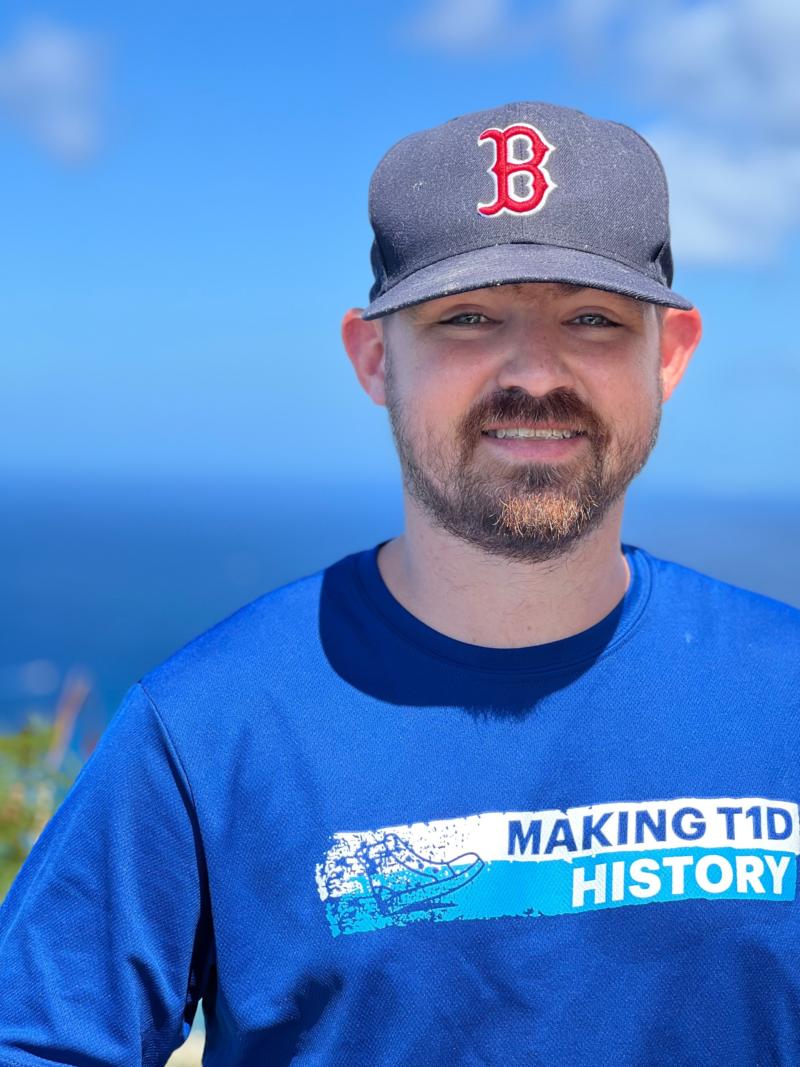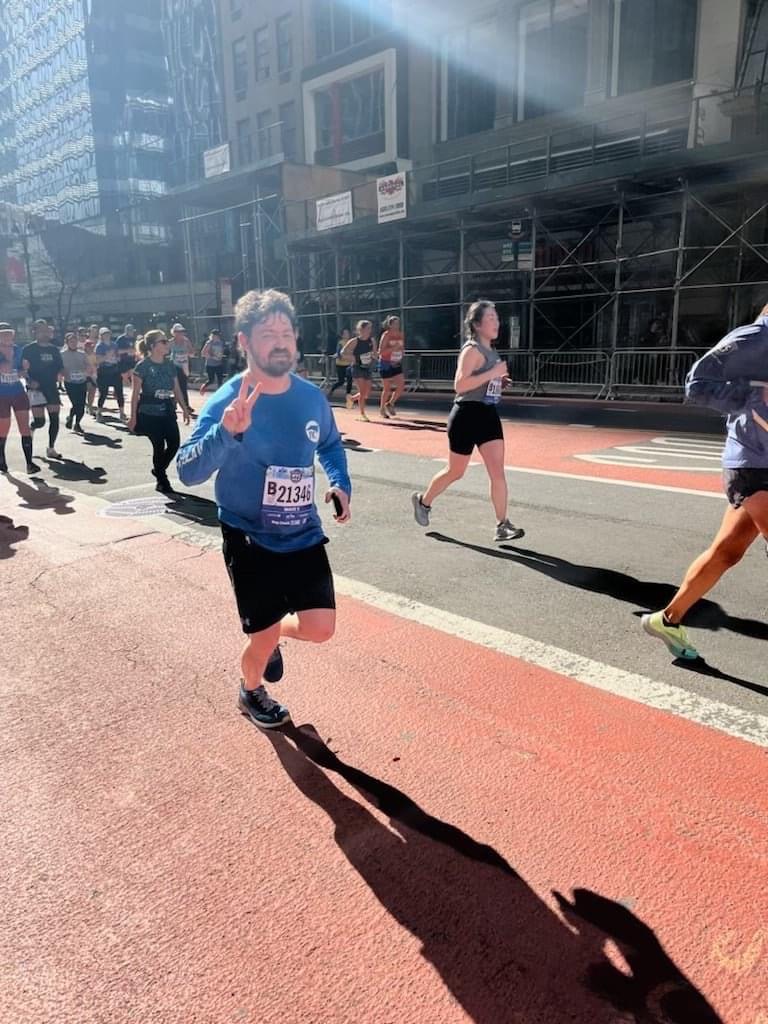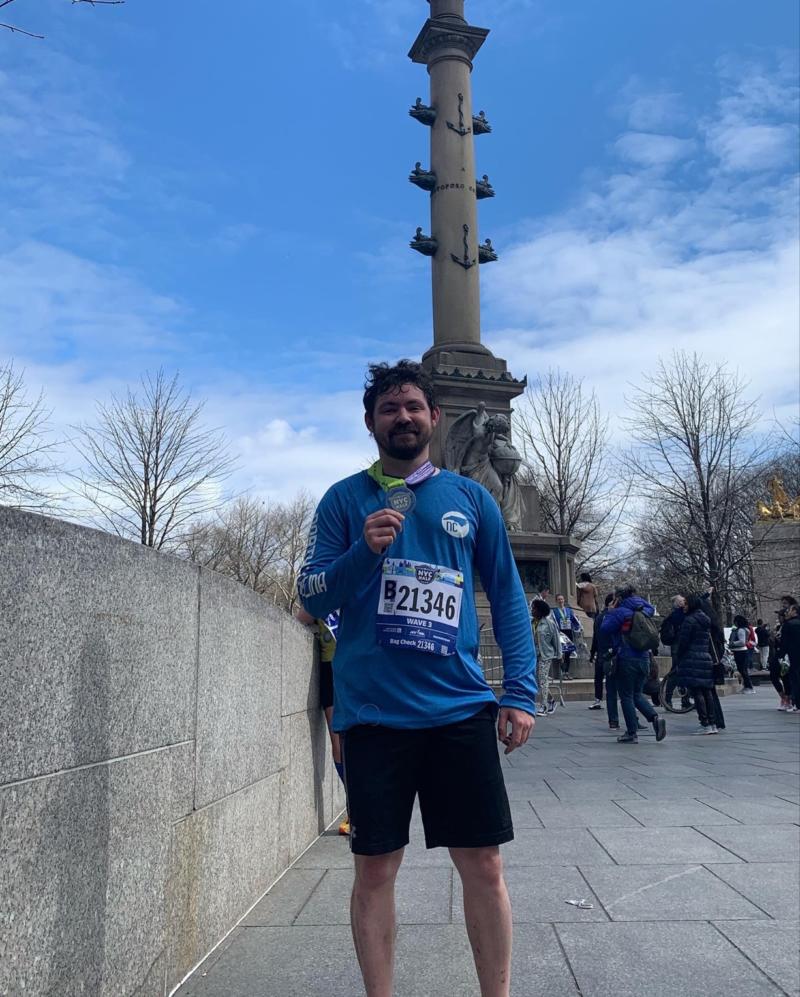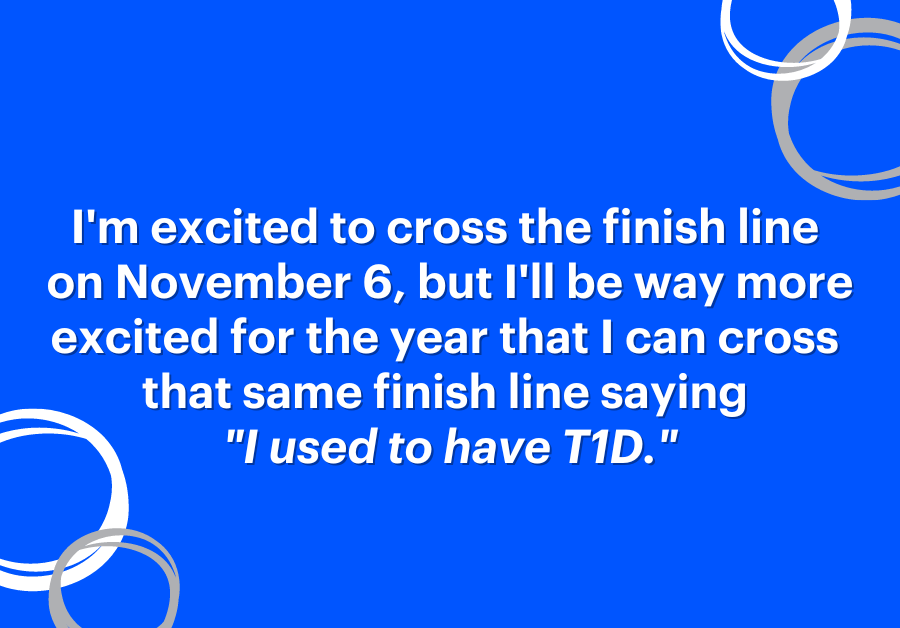Meet T1D Champion, Ben!
Every day, the JDRF community is moving #ForwardAs1 to improve the lives of people living with type 1 diabetes (T1D).
Meet Ben, who is running with Team JDRF in the 2022 TCS New York City Marathon on November 6th, and shares some of the challenges of training for a marathon while managing T1D. Thank you, Ben for all that you do to make an impact on the T1D community and move progress FORWARD!
————————————————————————————————————————–

My name is Ben Peery, and I live in New York. I have had type 1 diabetes for 28 years, and I connected with the JDRF Community through the Walk program about 18 years ago. For the past 3 years, I have worked in the Finance department at JDRF. When I’m not running, I enjoy travelling, playing live music, and exploring the city.
Why I’m running the marathon:
Like so many amazing members of JDRF, I’m running to raise money to help us find a cure and make the everyday lives of the T1D Community better. I also run because I hope kids who are growing up with T1D like I did will know that this disease can’t stop them. I hope that they’re able to see someone like them challenging themselves and that seeing that gives them hope, comfort, and strength.

One of the biggest challenges of training for a marathon in general is the time investment. A lot of the training runs take several hours, and that doesn’t include the stretching, squeezing in extra meals, the strength training, etc. Training for a marathon with T1D basically multiplies that time commitment by 2. Every run starts the night before. Is my site in good shape? Did I have enough water? Do I have low snacks for my run? Do I have low snacks for after my run? Do I have enough pockets to hold everything that I’ll need for the training distance? If I’m planning to train early in the morning, I typically set an alarm for 4 or 5AM to make sure that I’ll be in range when it’s time to get up. (Side note: there is NO WAY I would want to do a full marathon without my CGM. Huge shout out to JDRF for their investment in the research that made that possible.)

A second challenge with T1D and marathon training is managing glucose levels. T1D is especially cruel in the way that it demands perfection… and then it finds ways to tell you perfect wasn’t good enough. Sometimes, you can do everything right, and your blood sugar is still high (a pump site had a kink in it, you’re a little under the weather, you didn’t sleep enough, you’re stressed, etc.). It’s almost impossible to run distance with a high blood sugar. Cramping, dehydration, and fatigue are all symptoms of elevated glucose levels; running makes all of those more severe. Other times, you crash out of nowhere because yesterday’s run is still having a lingering effect. All of a sudden, that perfectly scheduled run in that huge block of free time is cancelled because you can’t get your blood sugar back in range.
Training for a marathon is tough, but training for a marathon with T1D is a conscious decision that requires your attention almost every moment of the day. This isn’t easy, but so many of us get up and do it because we know we can end this disease.
